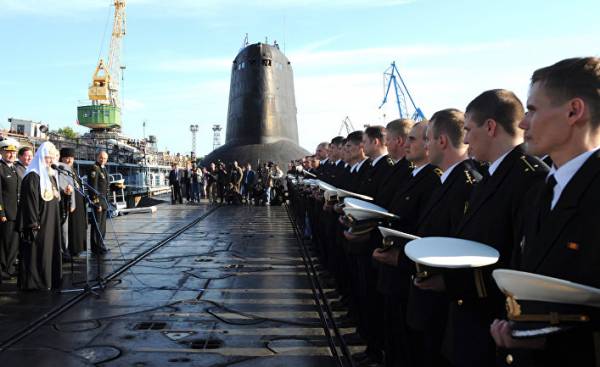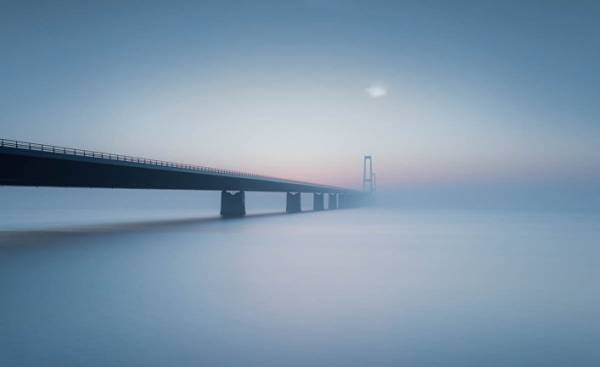
The campers that came sailing at sea or traveling by sea from Tallinn, soon after the Midsummer festival will have the opportunity to watch the unprecedented spectacle. It was then that the path of the world’s largest submarine “Dmitry Donskoy” with nuclear reactor and the possibility of equipping nuclear warheads, will lie along the Finnish fairway.
Few weeks the world’s largest submarine “Dmitry Donskoy” will cross the Gulf of Finland on the way to Saint Petersburg where she will participate in the Russian exhibition of arms shortly after the summer will be over the middle. Nuclear giant will be the headliner that attracts people to celebration of Day of Russian Navy in Kronstadt on July 30.
“The Baltic sea is relatively small, and if we are here a visit to look nuclear submarine of this magnitude, it will be possible to compare with the visit of the bull in a China shop”.
This comparison is conducted by the captain of the 2nd rank of Liimatainen Ossi (Ossi Liimatainen), Professor of naval tactics at the Higher school of defense.
“Dmitry Donskoy” in any way is not fit to walk on the Baltic sea or the Gulf of Finland. Submarine project “Shark” was constructed during the cold war as part of contemporary nuclear doctrine of mutual destruction of the super powers. It was based on the fact that the U.S. and Soviet Union could destroy each other with nuclear weapons, but developed the power of retaliation. This meant that countries with submarines hidden in unknown parts of the sea, could carry out a devastating retaliatory strike even after a devastating first nuclear strike. In theory this means that none of the parties will not dare to attack, because it is tantamount to suicide, and the world is in the balance based on fear.
Now the Baltic sea is to visit the nuclear giant of the Russian fleet. The news came last month, when this was written the Norwegian newspaper Barents Observer, citing the Russian “Izvestia”. “Dmitry Donskoy” is the last of six built for the Soviet Union submarines of the “Akula”, remaining in the service. Its home port is located in Severodvinsk on the White sea. The submarine belongs to the same type as the submarine in the movie “the Hunt for Red October”, published in the early 1990s. the Main role of a Soviet submarine captain played by Sean Connery.
“The Baltic sea is so small and shallow that you cannot use the submarine as it was intended by her designers,” says Ossi Liimatainen, according to which the “Dmitry Donskoy” will be forced most of the time to go to the surface, as in the Baltic sea and the Gulf of Finland is not going to be sufficient for safe underwater passage.
The first victory will be if the “Dmitry Donskoy” will be able to pass through the Great belt, where required draft of vessels less than 15 meters. “Don” draught of 12 meters.
 © flickr.com, Jacob SurlandПролив Great belt
© flickr.com, Jacob SurlandПролив Great belt
“Dmitry Donskoy” was created to transport 20 pieces of ballistic missiles, which in total has 200 nuclear warheads. Charge each of them 10 times more than the bomb dropped on Hiroshima.
Finland and Russia have agreements requiring countries to report on the transportation of radioactive cargo, but these agreements do not relate to military ships. It is therefore unlikely that, for example, the Finnish radiation and nuclear safety authority will receive some kind of alert before the visit of the “Dmitry Donskoy” in the Baltic sea, which can be regarded as a demonstration of strength by Russia.
“Raises a number of questions”
“First and foremost I see this as a political manifestation: they want to show their power to their own people. But of course, this raises a number of questions: why Russia wants to bring the submarine that had never been here before?” says Liimatainen.
“Dmitry Donskoy” is not the only nuclear ship with nuclear warheads, which will hit the road for two months. Company “Dmitry Donskoy” will be the largest and most heavily armed ship of the Russian fleet — the cruiser “Peter the Great”.
Swedish captain and participant in the debate on defence, Niklas Wiklund (Wiklund Niklas) last month commented on the planned visit of the ship in the newspaper Blekinge Läns Tidning. He is critical of the idea to send these two ships to the Baltic sea and believes that there is a possibility that and “Dmitry Donskoy”, and “Peter the Great” can stay after the parade to participate in Russian military exercises “Zapad” held in the Baltic sea every four years. Previously the exercise was dominated by offensive amphibious operations.
At the Higher school of defence in Helsinki do not think that the giant warships can play a significant role in the exercises, which were of special concern in the Baltic States.
“Of course, it is possible that the ship stays on the teachings of “the West”, but both ships area suitable for maneuvers in the Baltic sea is very limited. So I hardly know what operational benefits they can bring teachings. But, of course, ships can give some kind of symbolic role,” says Liimatainen.
The radiation safety centre in readiness
The radiation and nuclear safety authority Stuk has also paid attention to the planned offshore visit.
“The reactors of the ship less, than at a nuclear plant. And radiation, and the amount of radioactive substances it is possible to compare approximately with the tenth fractions of a reactor nuclear power plant. If misfortune happens, the consequences will be less than in the accident at the nuclear power station onshore,” says Antero Kuusi paadihaagise, chief inspector of the radiation protection Centre.
 © RIA Novosti, The Norwegian Armed Forces | go to photobacteria nuclear missile cruiser “Peter the Great” during the passage of aircraft carrier group of the Northern fleet in the Norwegian sea
© RIA Novosti, The Norwegian Armed Forces | go to photobacteria nuclear missile cruiser “Peter the Great” during the passage of aircraft carrier group of the Northern fleet in the Norwegian sea
An accident with a reactor on Board a submarine or missile cruiser “Peter the Great” would have required, however, protective measures in coastal areas. Nuclear warheads for transportation of which designed the submarine, designed for total devastation, but Kuusi paadihaagise says that Finns don’t need to worry about what they might detonate by mistake when the submarine will sail past Finland. It is technically impossible. However, possible scenarios for the centre Stuk include fire, which can lead to increased level of radiation hazard, although a restricted.
Antero Kuusi paadihaagise wants to reassure people about the risks and said that the radiation and nuclear safety authority does not intend to take any special measures until the ships arrive in the Gulf of Finland.
“Our task is to be prepared for nuclear accidents, and the visits of ships like these in our scenarios considered”, — assured Kuusi paadihaagise.







